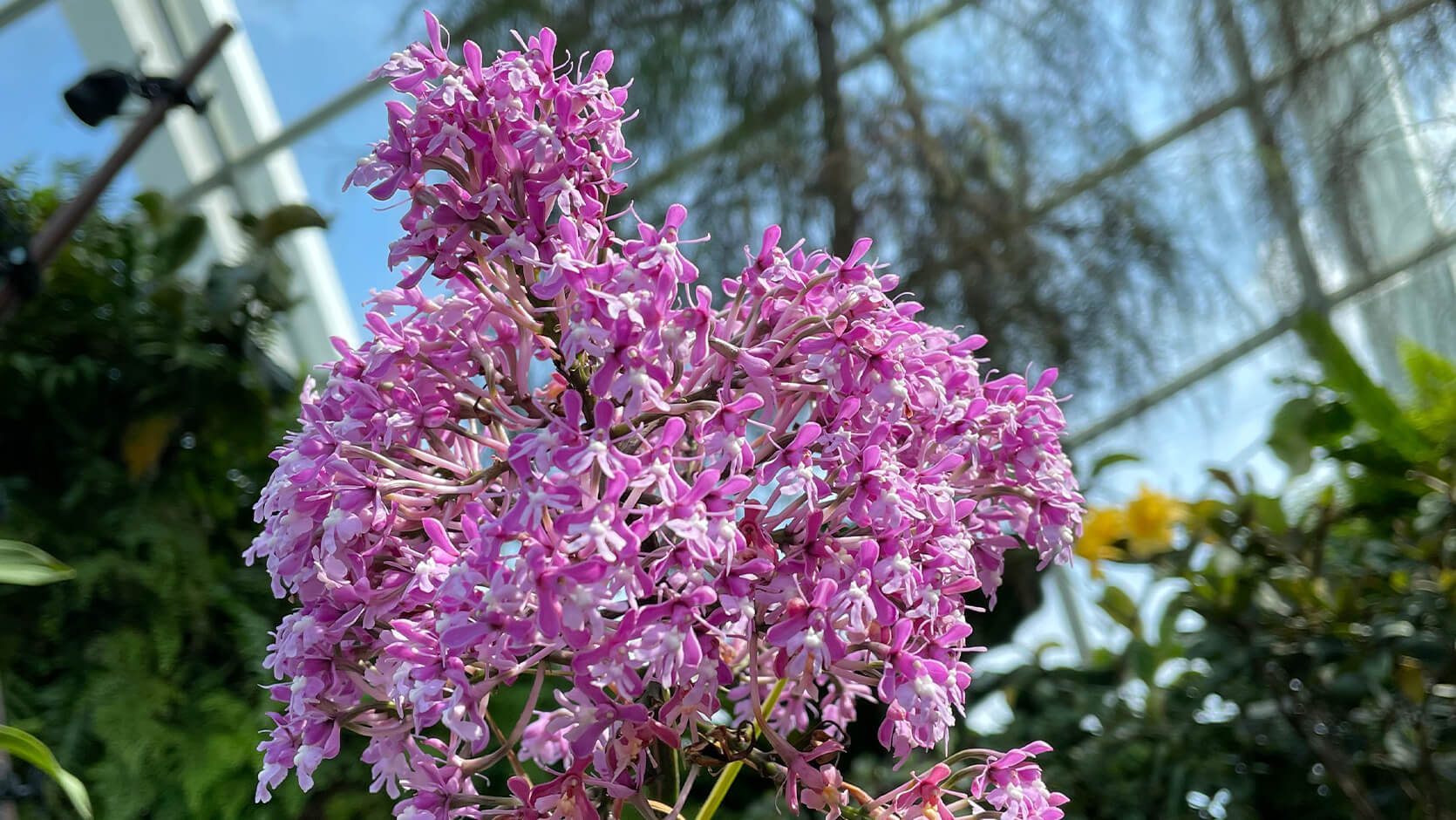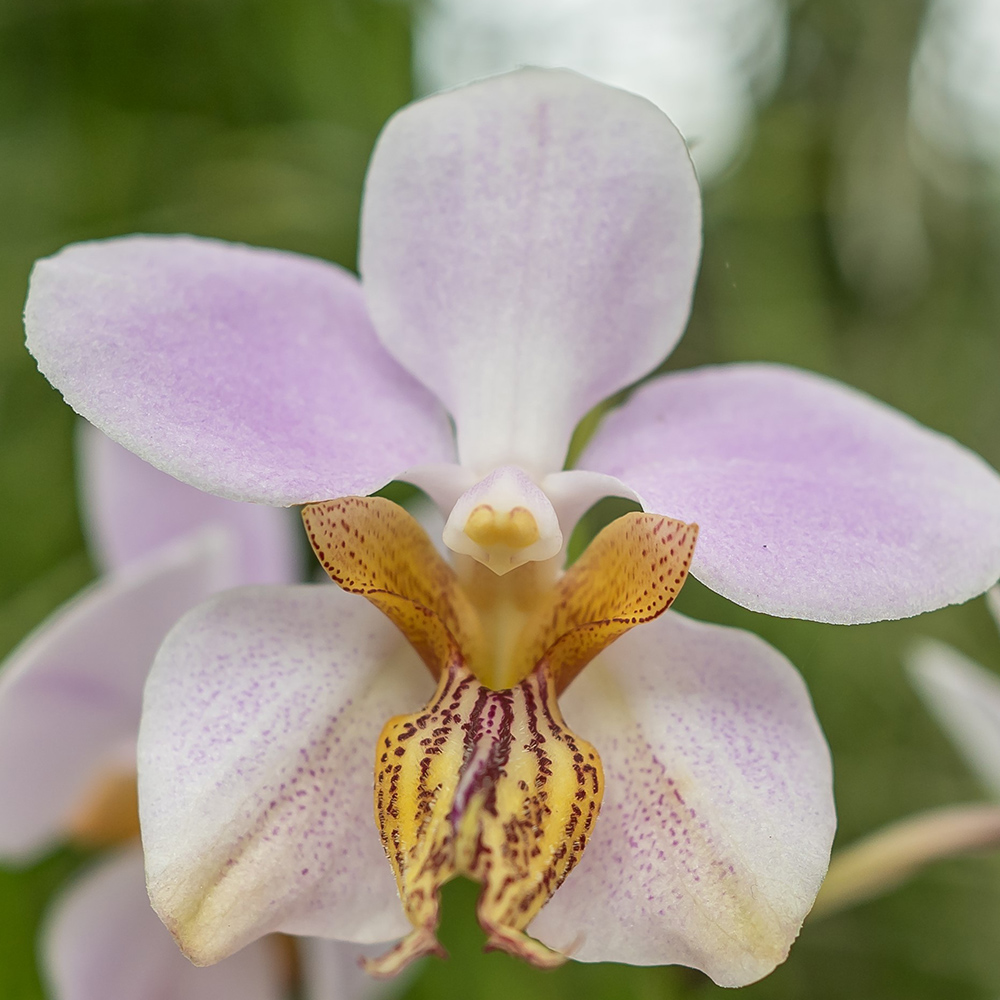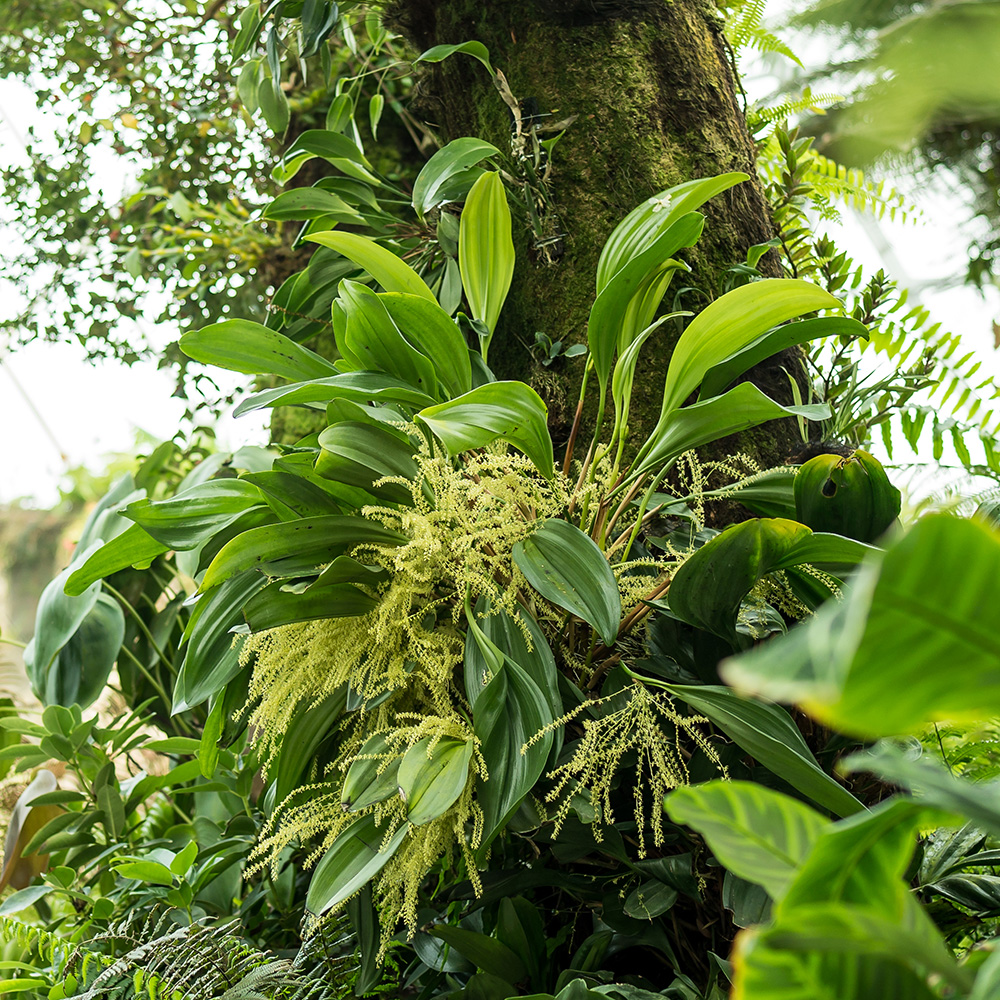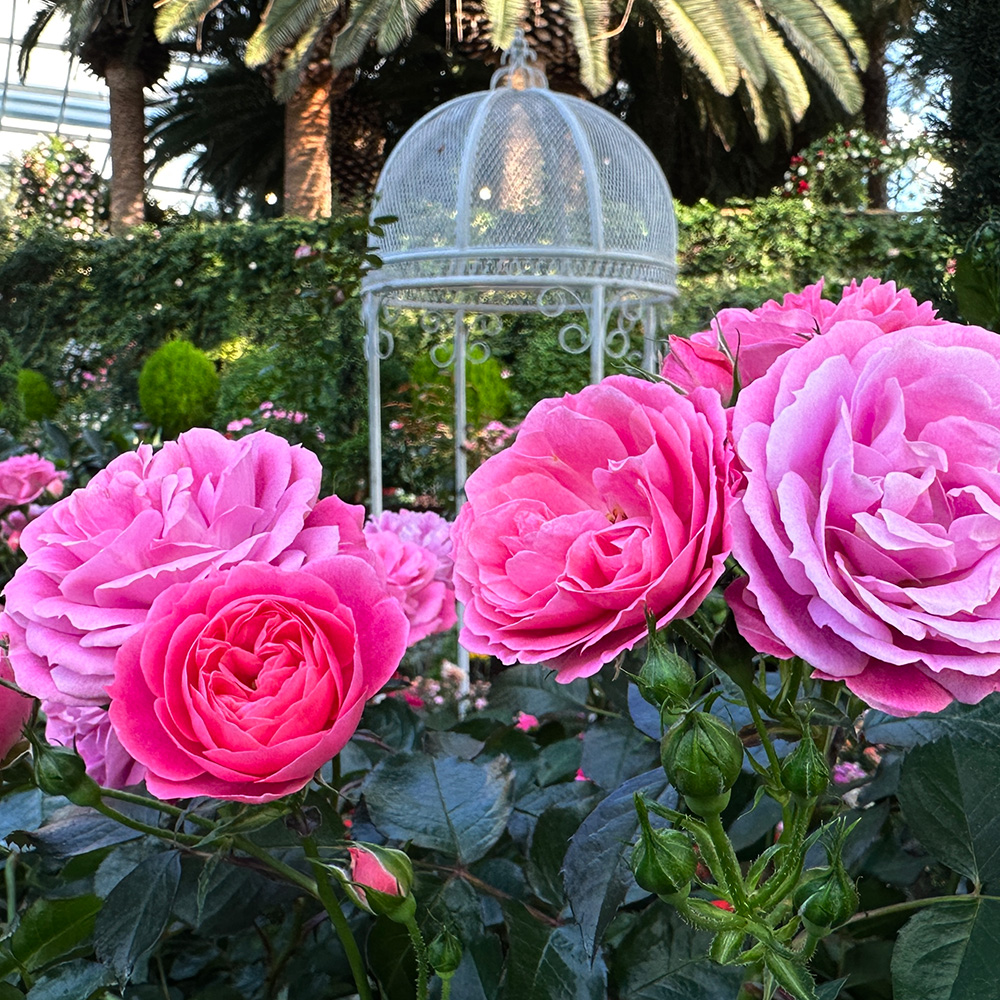Grass Tree (Xanthorrhoea glauca)
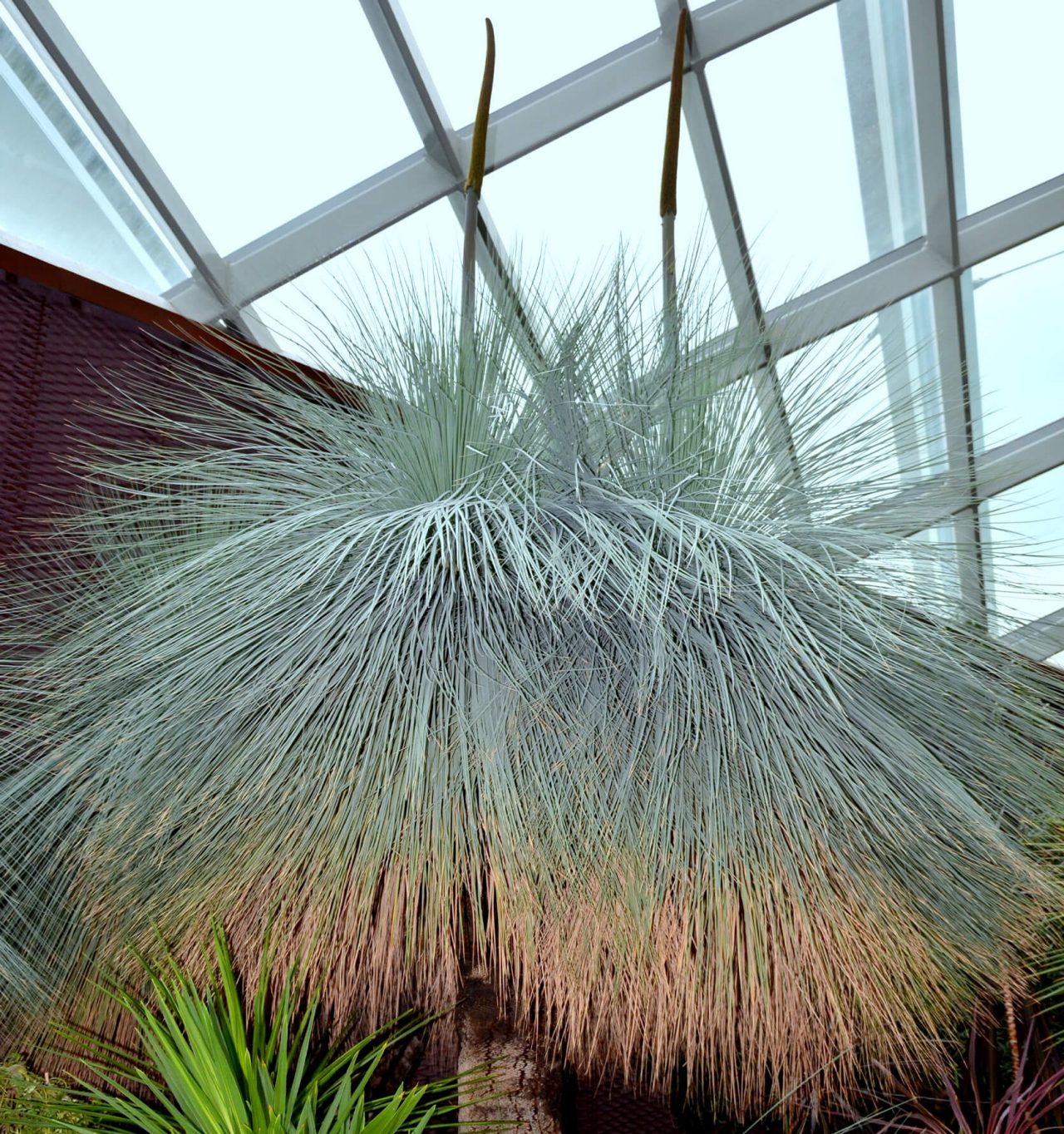 The luxurious silver leaves of the grass tree reach up to 1.5m in length, giving the grass tree its common name.
The luxurious silver leaves of the grass tree reach up to 1.5m in length, giving the grass tree its common name.
Native to the rocky ranges of southeastern Australia, from Queensland through Victoria, the grass tree (Xanthorrhoea glauca) is a slow-grower at an estimated rate of 1-2 cm per year, but can eventually attain a tree-like branching form over 6 metres in height in individuals 300-600 years old. An iconic and staple plant of Australian Aboriginal people, the grass tree was a source of food, materials for tool making, and glue, and also culturally prominent in their traditions and a creation fire myth.
A member of the Asphodelaceae family which also includes succulents like Aloe and Haworthia, there are actually 28 species of Xanthorrhoea, all commonly known as grass trees. To distinguish it from other species, Xanthorrhoea glauca is also called the blue grass tree for its grey-blue foliage. Like other large grass relatives (monocots) such as bamboo, banana, and palms, the grass tree is botanically a plant and not a tree, as it doesn’t produce woody tissue. Instead, the ‘trunk’ of the grass tree is made up of the persistent leaf bases of old leaves, glued together by the resin, for which the genus is named: ‘xanthos’ meaning ‘yellow’ and ‘rhoia’ meaning ‘flow’.
Old, dried leaves often form a huge skirt around grass trees, until they are burned away in intense seasonal bushfires. The tightly packed leaf bases protect the growing tips from the heat, allowing the plants to survive in their fire-prone environments and giving them their characteristically blackened trunks.
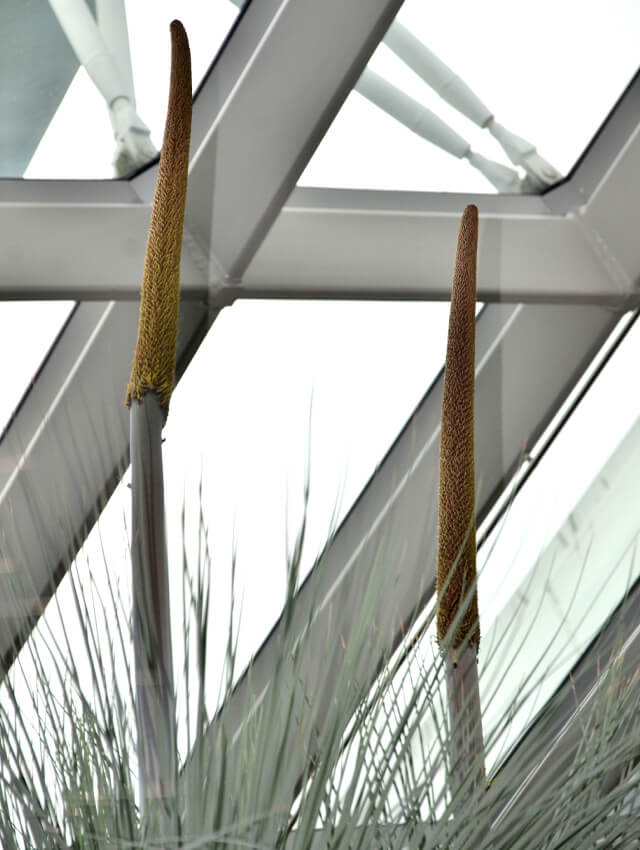 Our grass trees may have been stimulated to produce these long flower spikes by the record temperatures in April and May 2020 which also affected conditions in Flower Dome.
Our grass trees may have been stimulated to produce these long flower spikes by the record temperatures in April and May 2020 which also affected conditions in Flower Dome.
These bushfires may also be necessary to stimulate the prolific flowering of grass trees, which only bloom once every few years, often after rush fires and exposure to the plant hormone ethylene, present in wood smoke. The tall flower spikes bear hundreds of spirally-arranged white flowers which drip nectar to attract insect and bird pollinators.
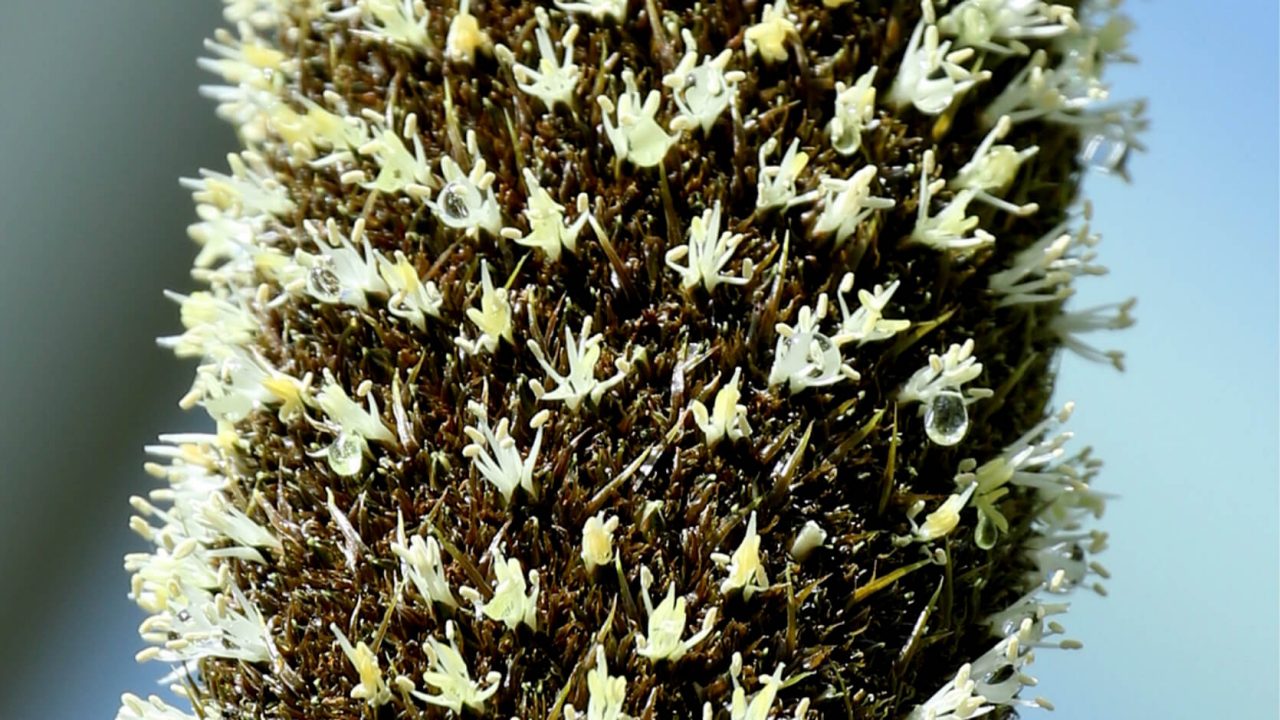 Tiny white flowers of the grass tree exude copious amounts of sweet nectar to attract pollinators.
Tiny white flowers of the grass tree exude copious amounts of sweet nectar to attract pollinators.
Our grass trees last flowered in 2011, shortly after they were planted into Flower Dome, likely due to transplanting-induced stress. The extremely high outdoor temperatures in the first half of 2020 may have been the heat-stress trigger that has induced these magnificent plants to flower again.
Come marvel at the long flower spikes of the grass trees in Flower Dome’s Australian Garden
Written by: Janelle Jung, Senior Researcher (Research and Horticulture)
A transplanted pake (Hawai'i-born Chinese), she's finding her own Singaporean roots. Every plant has a story, and Janelle helps discover and share these with colleagues and guests, hoping to spark a mutual plant passion! Ask her what plant she named her cat after!
